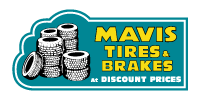
SHOP for TIRES
Brake Repair 101
There are few components on a vehicle that are as important as the brakes. If the brakes on your car do not function correctly, whether from excessive pad wear or a mechanical failure, the result can be catastrophic. Issues with the braking system on your vehicle should be addressed immediately.
While some repairs are best left to the pros, anyone with reasonable mechanical skill can do some brake maintenance, repairs or parts replacements. There are some basic steps you can take to ensure your brakes function correctly and you and your passengers are safe.
Understanding Brake Systems
If you have never repaired a vehicle, inspecting or repairing your brakes may seem overwhelming at first. However, once you have familiarized yourself with the components of the system and their functions, you will be more comfortable assessing your brakes.
One of the best ways to become acquainted with your vehicle's braking system is by listing the components and then going through each part to learn how it functions. Some of the main components to consider will be the brake pads, whether they be disc or drum style, calipers, rotors and the brake lines.
Inspecting Your Brakes
Create a checklist of the brake system parts, as well, as this will make the inspection process easier. Check for the deterioration of the brake lines. If the lines are compromised by wear, they can leak brake fluid, and if the fluid level gets too low, the brakes will not function.
Also, check the condition of the brake pads. There are two popular styles of brakes, disc and drum, and your vehicle may have one or the other, or a combination.
To assess the pads, check the manufacturer’s specifications so that you will know when the pads need changing. If you notice a grinding sound when applying the brakes, this is an indication of worn pads.
Time to Service
The type of repair needed is going to vary depending on the part you are replacing.
- Replacing Brake Pads – If the brake pads are worn and need to be replaced, you are going to have to remove the wheel and pull off the caliper. To keep the caliper from hanging by the brake line, it can be a good idea to use wire or string to tie it up, so it is not dangling. Remove the old pads and replace them with the new set of pads, remembering to note the position of the removed pads, so the new pads will fit properly.
- Replacing Rotors - To replace the rotors, you must first remove the wheel. Once this has been completed, you will need to remove the caliper and pads from the brake. This will then give you access to the rotor.To remove the rotor, simply pull on it, and it should pop off the housing. Rust and corrosion can sometimes cause rotors to stick to the housing, so it may need to be tapped lightly to free it. After the rotor has been removed, replace it with the new one, and you can reassemble the caliper.
- Brake Lines - If you noticed during the inspection that the brake lines were beginning to deteriorate or were leaking, replace those parts. Brake line systems can be extensive, so it is important to check the manufacturer specifications to ensure the proper steps are followed when being replaced.
Check Brake Fluid
Adequate brake fluid in the system is vital for the operation of the brakes. If you have replaced the brake lines, the brake fluid will need to be refilled. It is wise to change the brake fluid when you change the pads or rotors. At the very least, pop the hood and check the brake fluid level to make sure it is not low.
There is usually a maximum and minimum line on the brake fluid reservoir. Make sure the fluid level falls somewhere in-between.
Check the color of the brake fluid also. It should be clear with a yellowish tint. As brake fluid accumulates impurities, it will turn darker.
Summary
When checking your brakes, it is important to make sure the pads and rotors are in working condition and the brake lines are not leaking. If repairs are needed, be sure to familiarize yourself with the components, so you are more comfortable doing the work.
If you simply don't have the time, knowledge or experience to handle this inspection and repairs yourself, schedule an appointment with a professional auto shop. They will make sure your vehicle is safe to operate and have you back on the road in no time.
